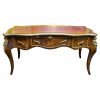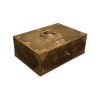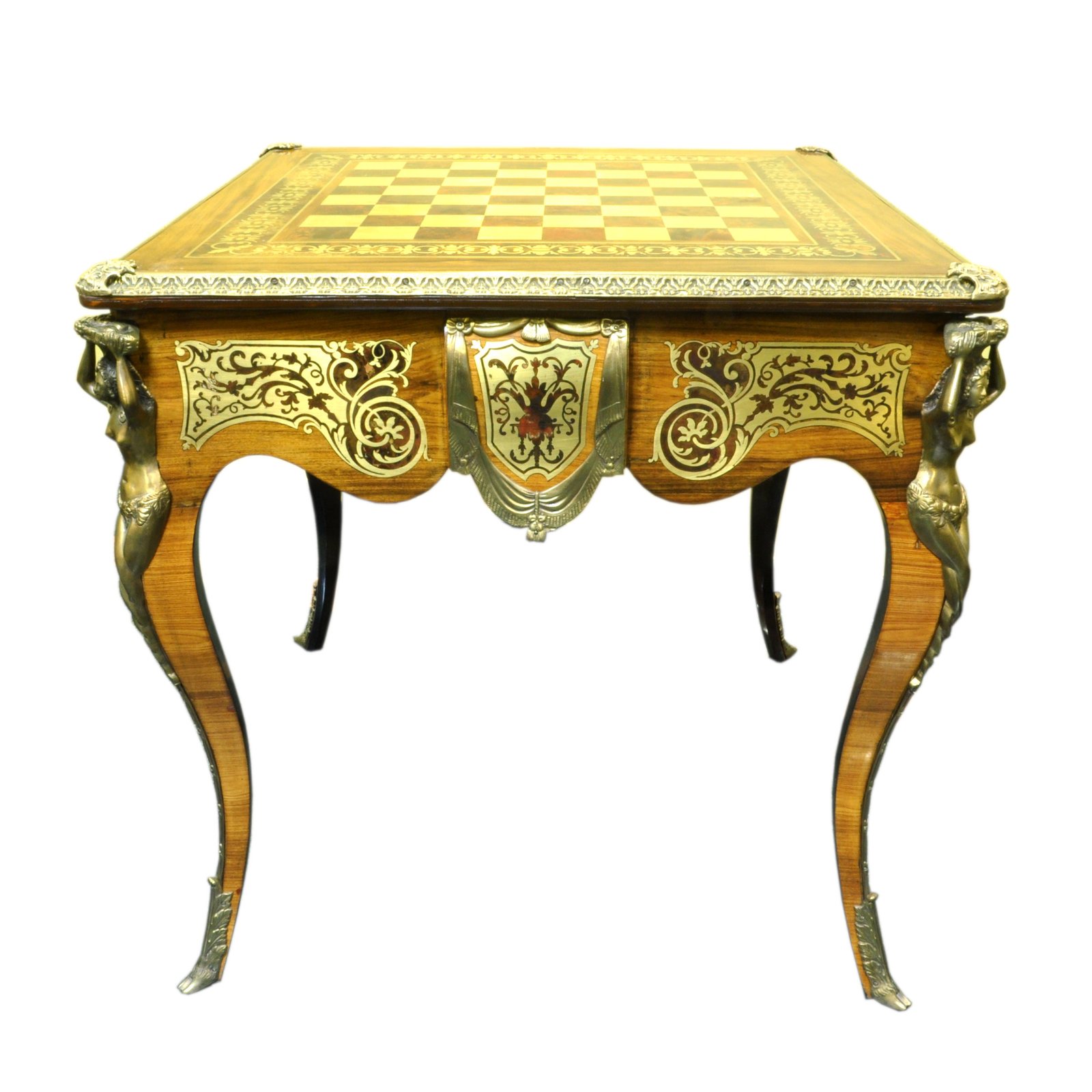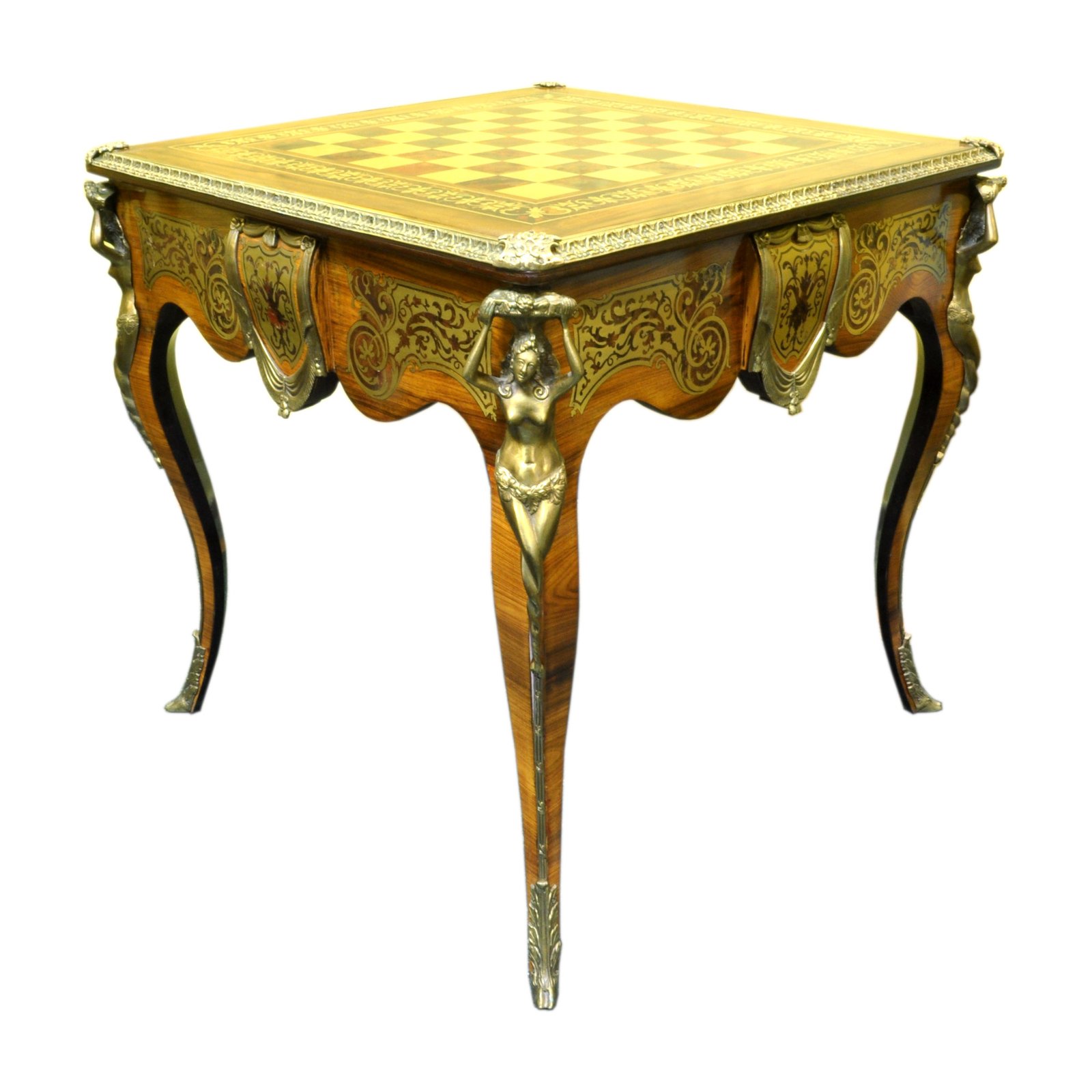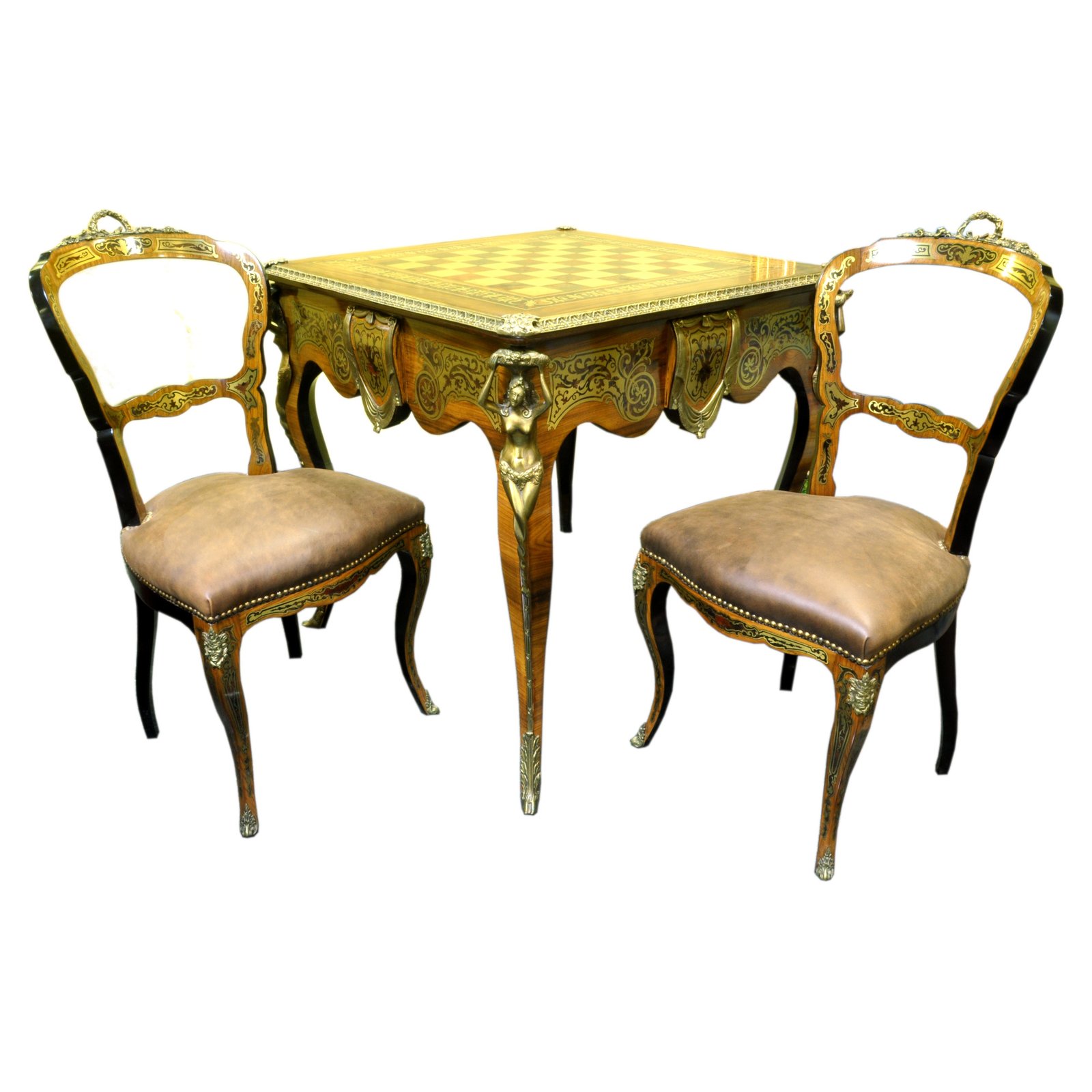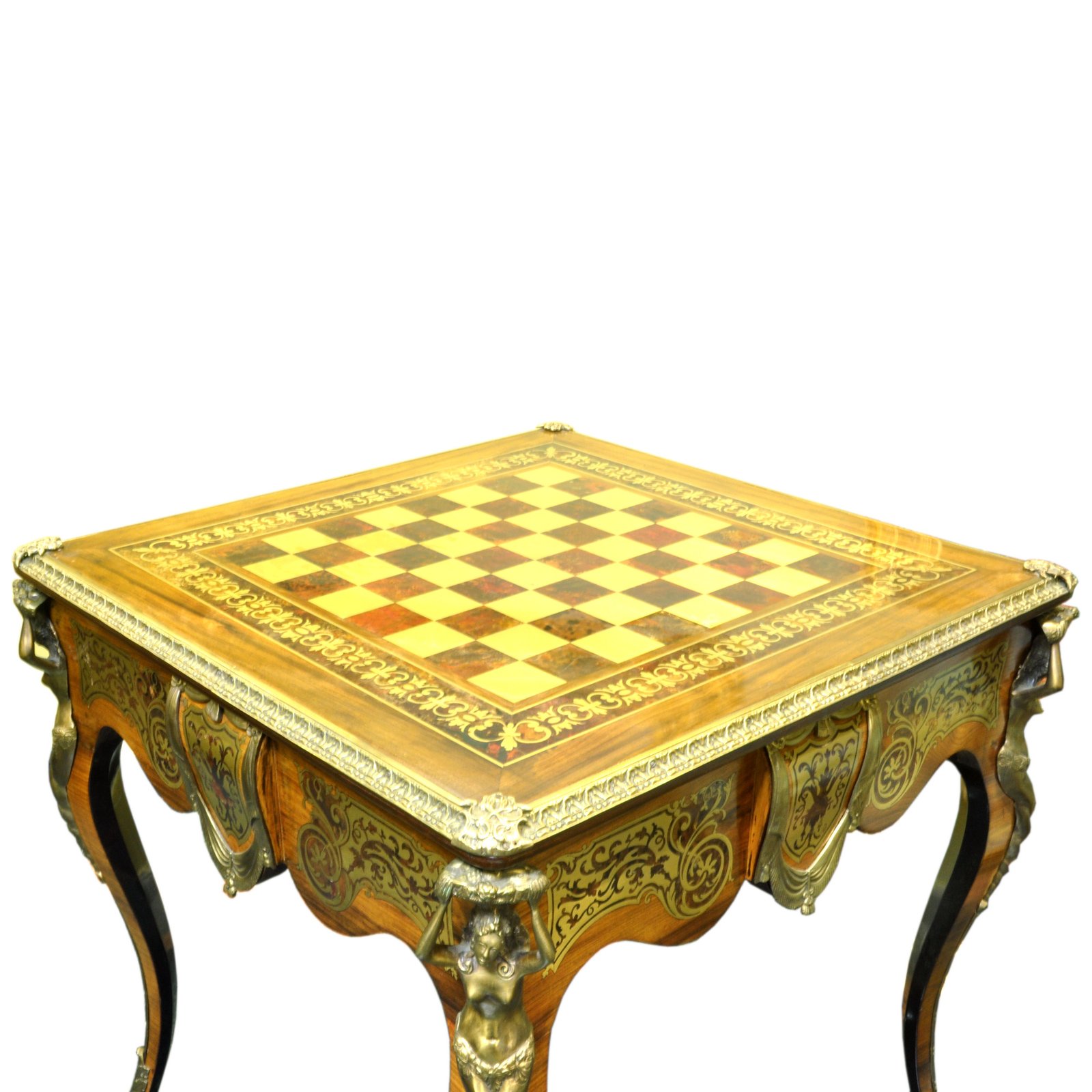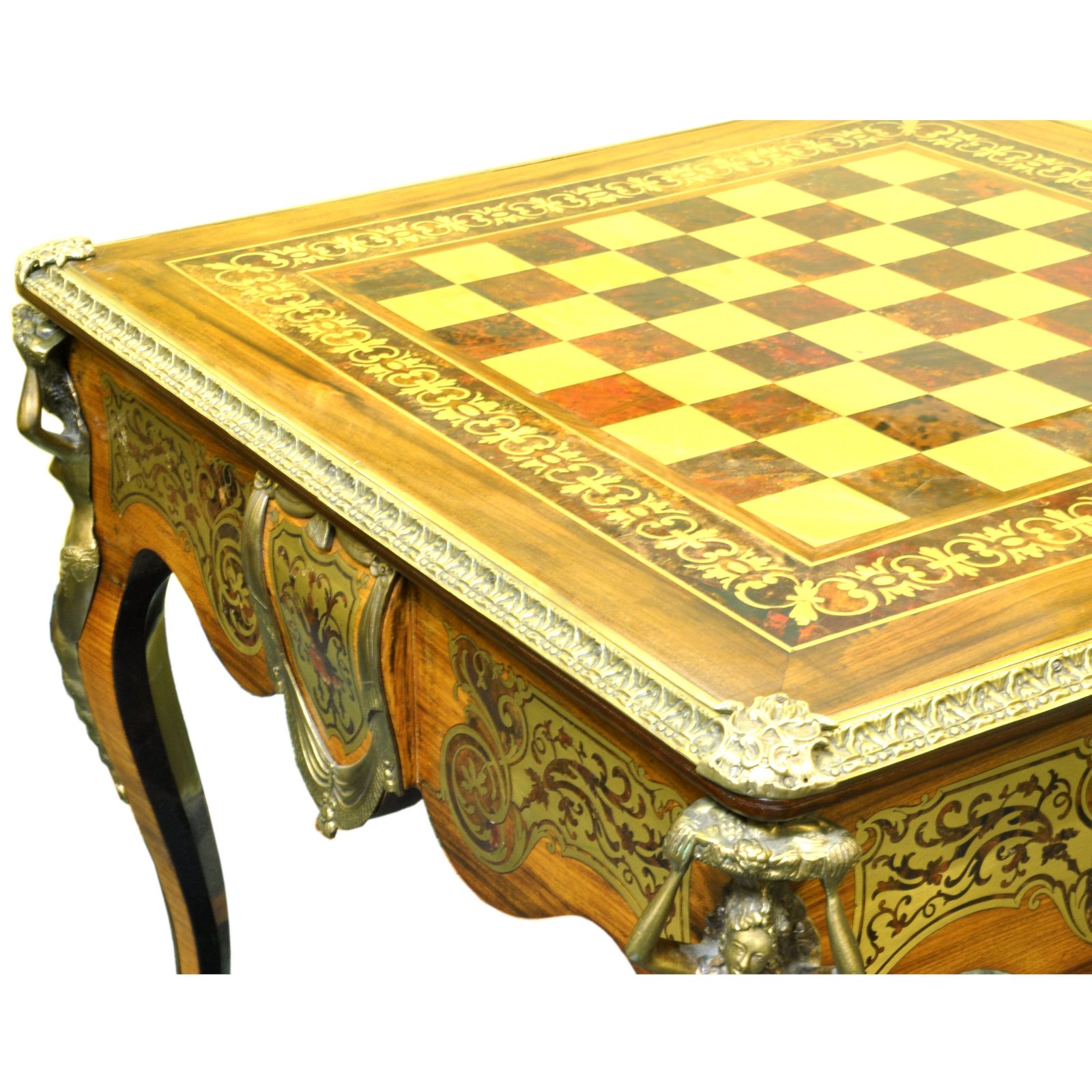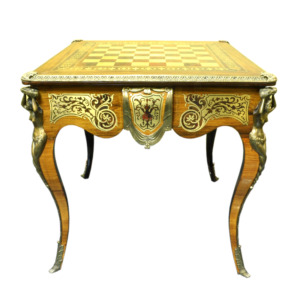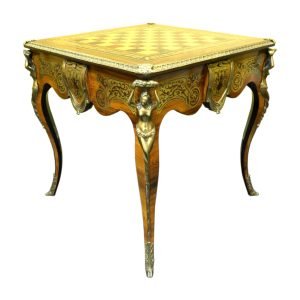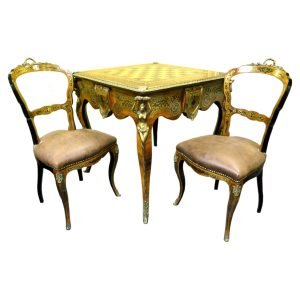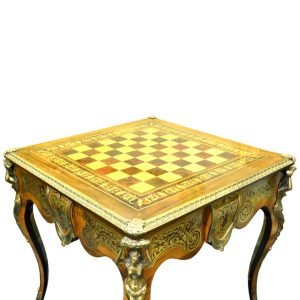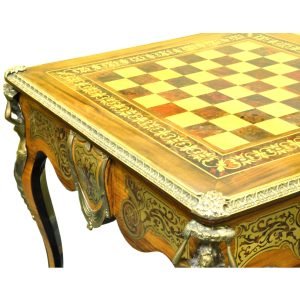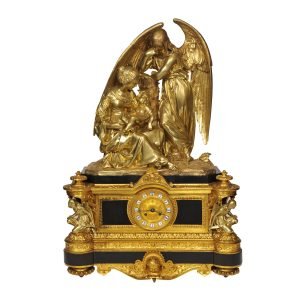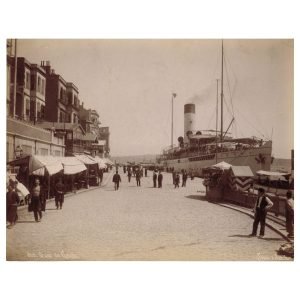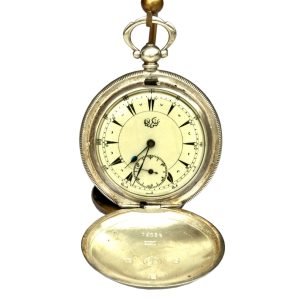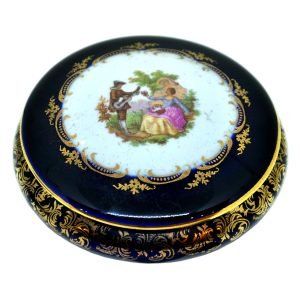Boulle
Boulle work is a type of rich marquetry process or inlay perfected by the French cabinetmaker André Charles Boulle (11 November 1642 – 28 February 1732). It involves veneering furniture with tortoiseshell inlaid primarily with brass and pewter in elaborate designs often incorporating arabesques.
Although Boulle did not invent the technique, he was its greatest practitioner and gave his name to it. Boulle was from a well known Protestant family of artists in France and his family was primarily in Paris but also in Marseille. The first recorded payment to Boulle by the crown, from 1669, specifies ‘ouvrages de peinture’, suggesting that he was originally a painter. Boulle was awarded the title of master cabinetmaker around 1666 and, in 1672 Boulle received the post of Premier ébéniste du Roi and was admitted to a group of skilled artists maintained by Louis XIV, in the Louvre Palace. In 1672, Boulle received a warrant signed by the Queen, giving him the added title of ‘bronzier’ as well as ‘Ebeniste du Roi’. One of Boulle’s greatest masterpieces is considered to be his decoration of the dauphin’s private study, created between 1681 and 1683, with flooring in wood mosaic, detailed paneling and marquetry. André-Charles Boulle’s masterpieces are now mostly in museums and have come to represent the wealth, luxury and finesse of the court of Louis XIV, the Sun King. In 2016, a putative descendant of Andre-Charles Boulle, Jean-Raymond Boulle, invented a Boulle Work process of inlay using gem diamonds which is produced by AkzoNobel and has been used by Rolls Royce.

